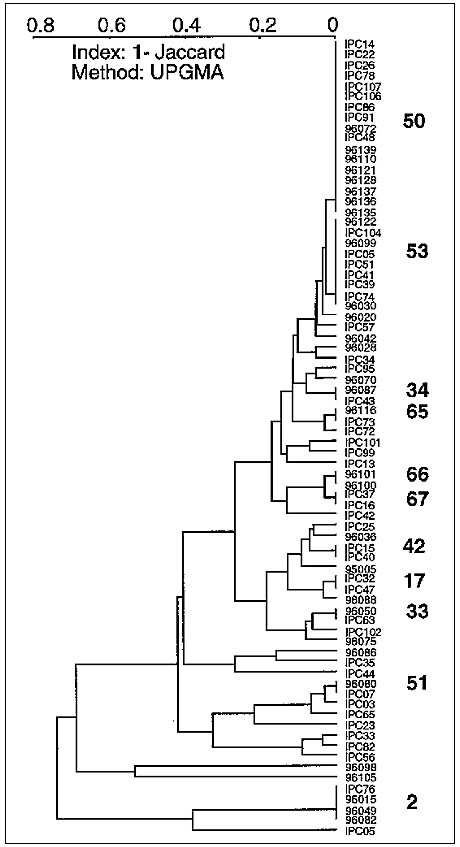Volume 5, Number 3—June 1999
Research
Tuberculosis in the Caribbean: Using Spacer Oligonucleotide Typing to Understand Strain Origin and Transmission
Figure 4

Figure 4. A dendrogram illustrating spoligotyping results of 76 Mycobacterium tuberculosis isolates from French Guiana (shared patterns are shown in bold). Top to bottom; patterns 50 and 53, ubiquitous; types 54 and 36, which do not appear, are found only for isolates IPC99 and IPC57, respectively; type 34, a ubiquitous type that was limited to French Guiana in this study; types 66 and 67, specific; type 42, ubiquitous; type 17, specific; type 33, ubiquitous; type 51, ubiquitous; type 31, which does not appear, is found only for isolate IPC23 and is shared with 94112 in Guadeloupe; type 2, shared by four isolates in Guadeloupe.
Page created: December 10, 2010
Page updated: December 10, 2010
Page reviewed: December 10, 2010
The conclusions, findings, and opinions expressed by authors contributing to this journal do not necessarily reflect the official position of the U.S. Department of Health and Human Services, the Public Health Service, the Centers for Disease Control and Prevention, or the authors' affiliated institutions. Use of trade names is for identification only and does not imply endorsement by any of the groups named above.